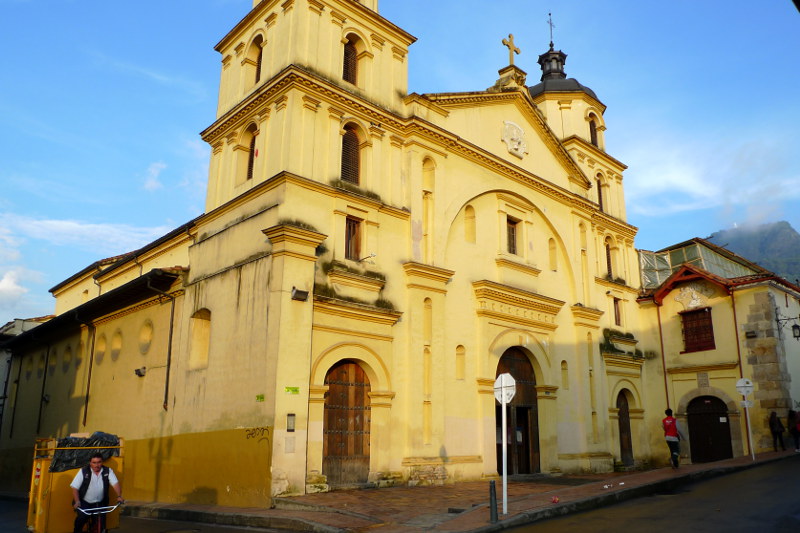La Candelaria contains the majority of the historic churches in Bogotá, of which Nuestra Señora de la Candelaria (also known as Iglesia y Convento de La Candelaria) is one. But the history of this particular church doesn’t start in Bogotá; it starts four hours away in the Villa de Leyva and briefly touches the Iglesia de St. Augustine a few blocks away.
Villa de Leyva is a small town that was declared a National Monument by the government of Colombia. The village played a part in Colombia’s early history but faded away and remained untouched throughout most of its colonial history. Thus, when rediscovered in the 1970s, the country moved to preserve its historical architecture and buildings. The building most important to this post is the Convento de San Agustín, which was built on land awarded to Fray Vicente de Requejada in 1573.
A century later, the monks of the Augustine order in Villa de Leyva looked to expand to Bogotá and establish a monastery at the base of Monserrate. Already, the Iglesia de St. Augustine (1637) was established in La Candelaria but shortly after this church’s construction, the Augustinian Recollects began building a hospice, which they called San Nicolás de la Candelaria. There was some political controversy surrounding its construction and in 1653 the order was given to demolish the hospice. It seems it was built without the proper permissions.
The actual razing happened in 1681, the religious order fought the demolition and the bodies buried in the hospice graveyard needed to be moved to the Iglesia de St. Augustine before the building could be brought down. Five years after the destruction in 1686, all political and legal issues were resolved and the Augustinian Order pursued building a new church where the hospice originally stood. This time the church and convent were designed by architect Don Diego de Montemayor Sanchez and given approval by the city. Construction was completed in 1702 and it was consecrated Nuestra Señora de la Candelaria by the Augustinian Recollects.
Inside the building, paintings by Gregorio Vásquez (1638-1711) line the upper level of the church. These would have been painted before the completion of the church because Vásquez refused to paint after he was jailed for participating in the kidnapping of royal judge Dona Maria Teresa de Orgaz. After Vásquez’s death in 1711, his paintings were incorporated into the church.
